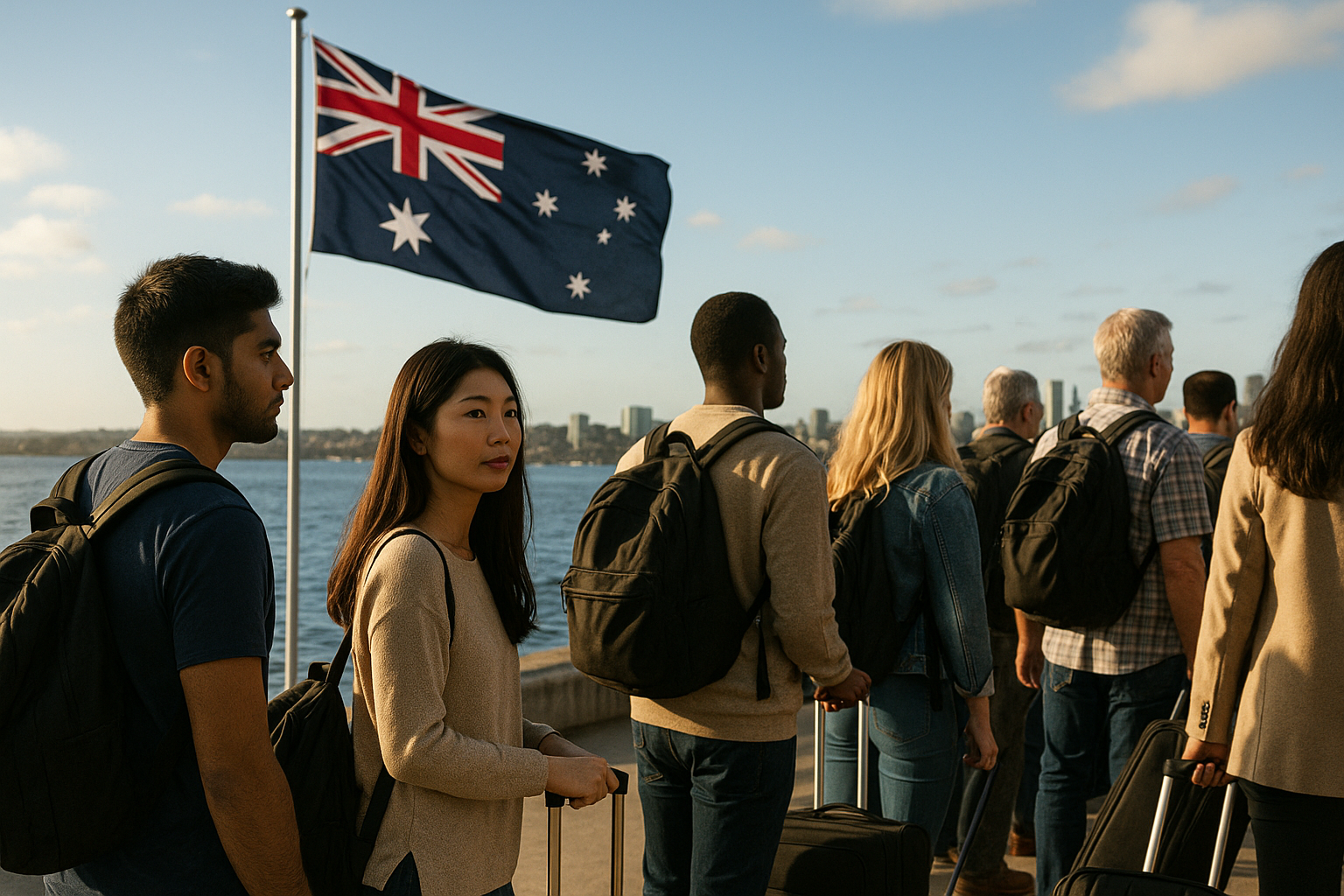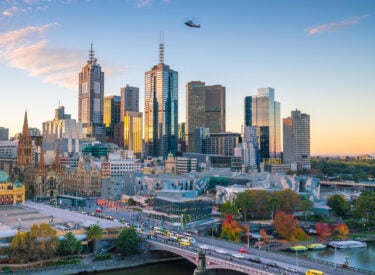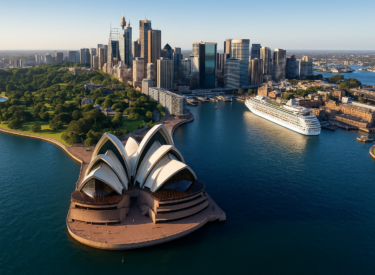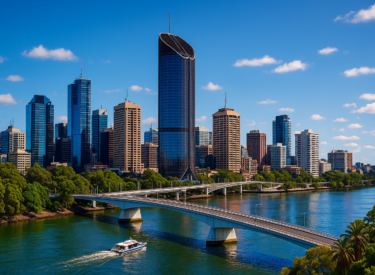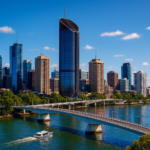
Key takeaways
Australia’s recent spike in migration isn’t a permanent surge; it’s a rebound after COVID border closures.
While often blamed for rising rents, most students live in purpose-built accommodation; their main pressure on housing comes indirectly, by competing for construction capacity, not by renting family homes.
Our current system is reactive, welcoming whoever qualifies, rather than planning for the skills Australia will need in the future.
Even when migration was negative during the pandemic, house prices still rose, showing affordability problems are structural, not demographic.
Migration has always been part of Australia’s DNA, but right now it’s shaping our future more than almost any other force.
In 2024, about 580,000 new residents arrived, while roughly 240,000 people left permanently, giving us a net migration gain of around 340,000.
That’s significantly higher than our long-term average.
And it’s got plenty of Australians asking the big questions.
Are we growing too fast? Who exactly are these new arrivals? And can our economy, infrastructure, and housing system keep up?
For weekly insights subscribe to the Demographics Decoded podcast, where we will continue to explore these trends and their implications in greater detail.
Subscribe now on your favourite Podcast player:
A “migration surge”? Not quite
When you look closely, this so-called “migration surge” is less about a sudden boom and more about catching up after the pandemic.
As demographer Simon Kuestenmacher explains in our latest Demographics Decoded podcast:
“The spike we’ve seen post-pandemic isn’t really an explosion in migration; it’s catch-up. We essentially squeezed three and a half years’ worth of international students into just one and a half years.”
During COVID, Australia closed its borders.
Temporary visa holders and international students, who didn’t qualify for financial support, packed their bags and went home.
For the first time since Federation, Australia experienced negative net migration.
When borders reopened, the government and universities moved quickly to fill the void.
That meant a flood of visa approvals for students and workers who’d been waiting overseas.
The numbers appear high; when averaged since 2020, migration is about 1.8% higher than pre-pandemic levels.
So rather than an ongoing surge, what we’ve really seen is a compressed rebound, one that’s now slowing back toward long-term averages.
Students: the unsung economic powerhouse
If there’s one group driving these figures, it’s international students, who make up roughly 35% of all new arrivals.
Education isn’t just an export industry; it’s one of the four pillars of Australia’s prosperity, alongside mining, agriculture, and tourism.
“Each international student contributes around $65,000 to the economy every year,” Simon notes.
“About half of that comes from tuition fees, and the rest from living expenses, food, rent, transport, and everything else they spend while studying.”
At any given time, around 800,000 students are on the ground in Australia.
Universities rely heavily on this income stream, and so do countless local businesses, from cafes and rental providers to tech and retail employers.
But while some blame international students for rising rents, Simon says that’s misplaced:
“Most international students live in purpose-built student accommodation, the so-called ‘shoebox apartments’. These buildings wouldn’t exist without them. They’re not competing directly with renters in the general market.”
He does acknowledge, though, that these developments do compete for construction capacity, the same builders, trades, and resources needed for new homes and offices.
That’s where the indirect housing pressure comes from.
The real challenge: strategic vs. reactive migration
Australia’s migration policy is often reactive, a blunt tool for complex needs.
We welcome whoever meets the criteria, rather than planning around the skills our future economy will demand.
Simon believes that’s a missed opportunity:
“If we take in hundreds of thousands of students, that means fewer skilled workers within our migration cap. We should align education with the skills we know we’ll need in five to ten years, in aged care, engineering, medicine, and technology.”
He argues we should “weaponise” international education, turning it into a talent pipeline.
Instead of treating students as a temporary cash flow, Australia could integrate them into long-term workforce planning.
That means fast-tracking permanent residency for graduates in critical sectors and building a seamless pathway from university to skilled employment.
These graduates are already educated to Australian standards, fluent in English, and socially integrated, precisely the kind of migrants most likely to contribute meaningfully over decades.
Who’s coming now: a new wave of migration
The face of migration has changed.
Gone are the post-war waves of Greeks, Italians, and Maltese who helped build modern Australia.
Today’s arrivals come from a far more diverse mix of countries: India, China, the Philippines, Nepal, Brazil, and a growing number from Africa and Latin America.
Australia’s migration system doesn’t target specific ethnicities. It simply asks: Can you pay for your education? Do you have a skill we need?
That’s why economic demand and global demographics, rather than ideology, now drive who arrives here.
“There are no young Europeans left to import at scale,” Simon quips. “We take people from wherever, based on what our system needs, or thinks it needs.”
But he warns that the skilled migration list, the bureaucratic document defining which jobs are “in demand”, can feel a bit like Uber Eats:
“We say we want 500 engineers, 25,000 nurses, 200,000 aged-care workers, and then whoever ticks the boxes can come in. It’s not linked tightly enough to actual jobs.”
That lack of focus means some industries get oversupplied while others remain chronically short-staffed.
We’re hooked on migration – and here’s why
Australia’s population is ageing rapidly.
Every year, more workers retire than enter the workforce.
Migration fills that gap, and without it, our economy would slow to a crawl.
“We’re hooked on migration,” Simon says. “It keeps us young and keeps the tax system afloat.”
That’s not just rhetoric. Around 52–54% of federal tax revenue comes from income tax.
With 90% of new migrants under 40, they’re the taxpayers and workers who fund our public services, schools, and infrastructure.
So when politicians promise to “slash migration,” Simon calls it pure populism.
“You can only take that seriously if they also tell you how they’ll replace the lost tax revenue. Otherwise, it’s just noise.”
Without migration, we’d face a shrinking workforce, skills shortages, and fiscal strain, all while caring for an ageing population that’s living longer.
Blaming migration for housing shortages misses the point
It’s true, most migrants rent in their early years and later aspire to buy, often in suburbs where their communities are growing.
That’s one reason demand in many middle-ring suburbs remains strong.
But Simon points out a key truth:
“Even when migration was negative during the pandemic, house prices still rose. Cutting migration won’t fix affordability, because housing is expensive by design.”
Australia’s political and financial systems are built around rising home values.
As John Howard once said, “No voter ever complained their house went up in value.”
Three-quarters of voters either own or are buying a home, so there’s little political appetite for policies that would reduce prices.
The result? Rising housing costs are baked into the system.
Migration may add demand, but the root causes are policy inertia, restrictive planning, and a chronic underinvestment in infrastructure and housing supply.
So, what should Australia do differently?
If Simon could redesign the migration system, his strategy would be sharp and future-focused:
- Target skills, not just numbers. Limit the migration list to genuine skill gaps and keep it updated in real time.
- Align universities with workforce needs. Encourage degrees that match Australia’s future economy, and create clear pathways to residency for graduates.
- Fast-track high-value workers. Simplify and streamline permanent residency for graduates and skilled professionals in critical sectors.
- Plan long-term. Integrate migration planning with housing, transport, and infrastructure strategies, not after the fact.
“By the time these students graduate,” Simon says, “they’ve invested years of their life here. They’re educated to our standards and already part of the community. That makes them ideal future citizens.”
The bottom line: migration is Australia’s lifeblood
Migration isn’t just about numbers; it’s about nation-building.
It keeps our population young, fuels economic growth, and sustains industries that would otherwise face crippling shortages
Yes, it comes with challenges: housing, infrastructure, and social cohesion, but with strategic planning, it can be one of our greatest strengths.
As I often remind investors and policymakers alike, demographics drive our destiny.
And right now, migration is the force quietly shaping Australia’s economy, property markets, and future prosperity.
If you found this discussion helpful, don't forget to subscribe to our podcast and share it with others who might benefit.
Subscribe now on your favourite Podcast player:

